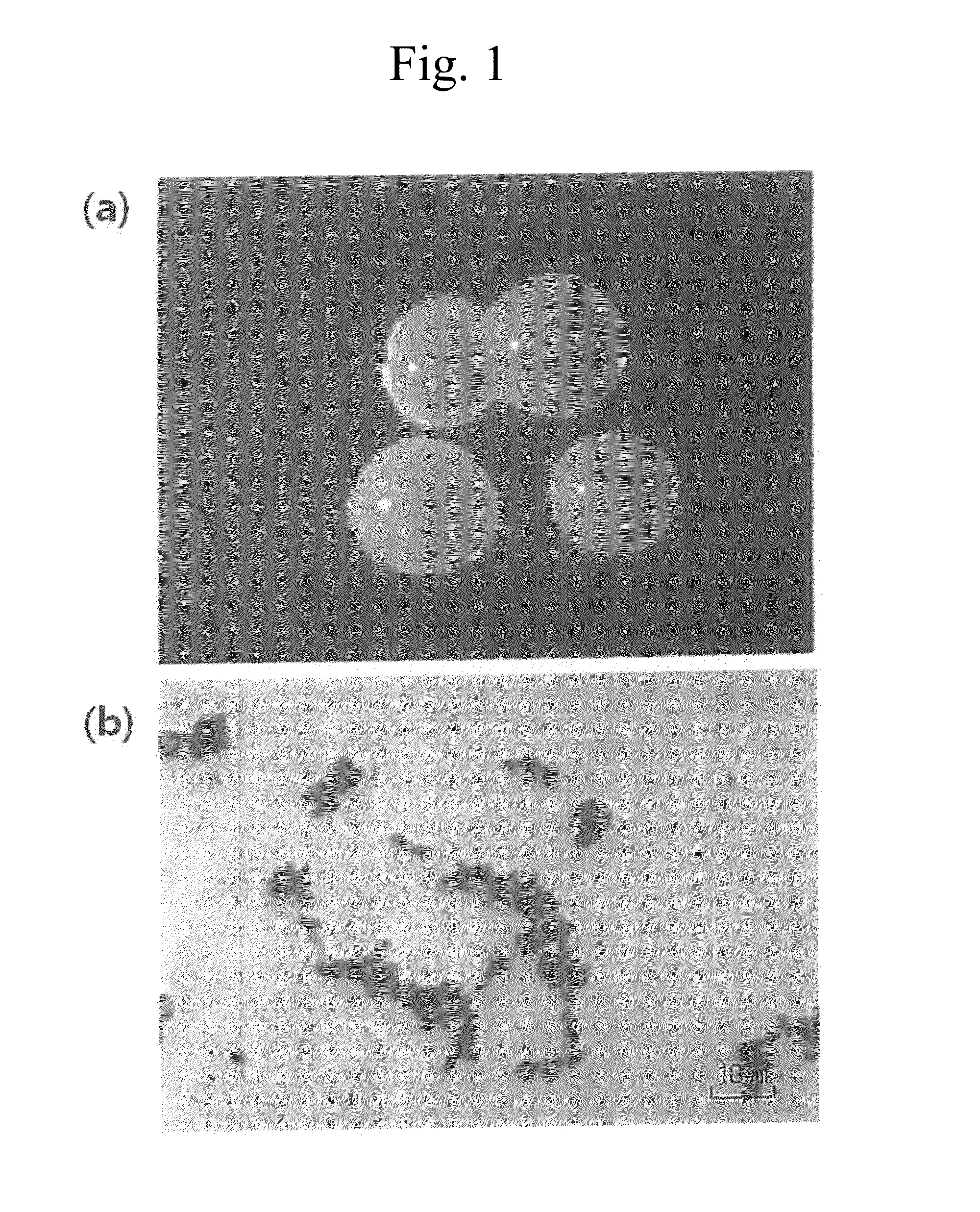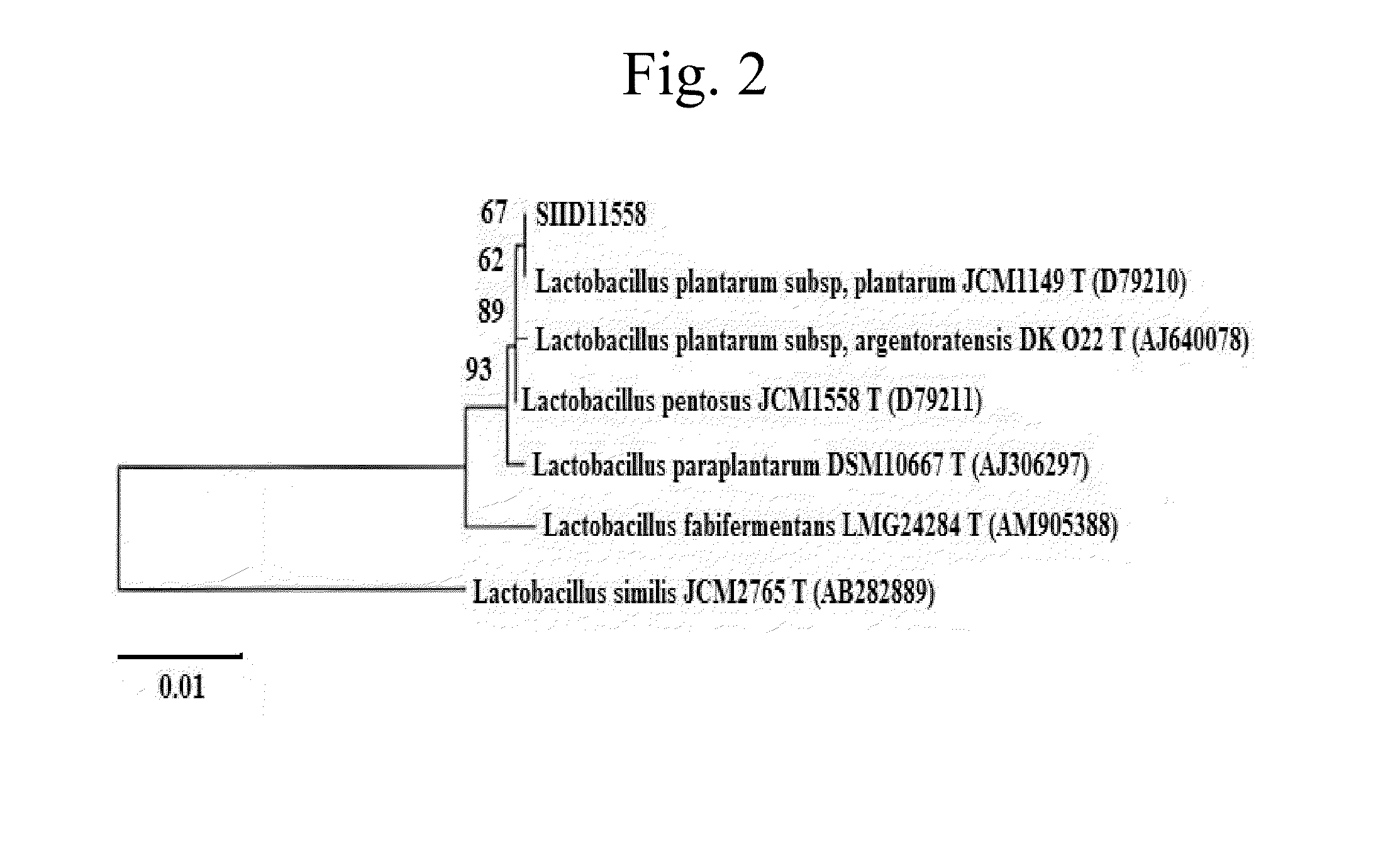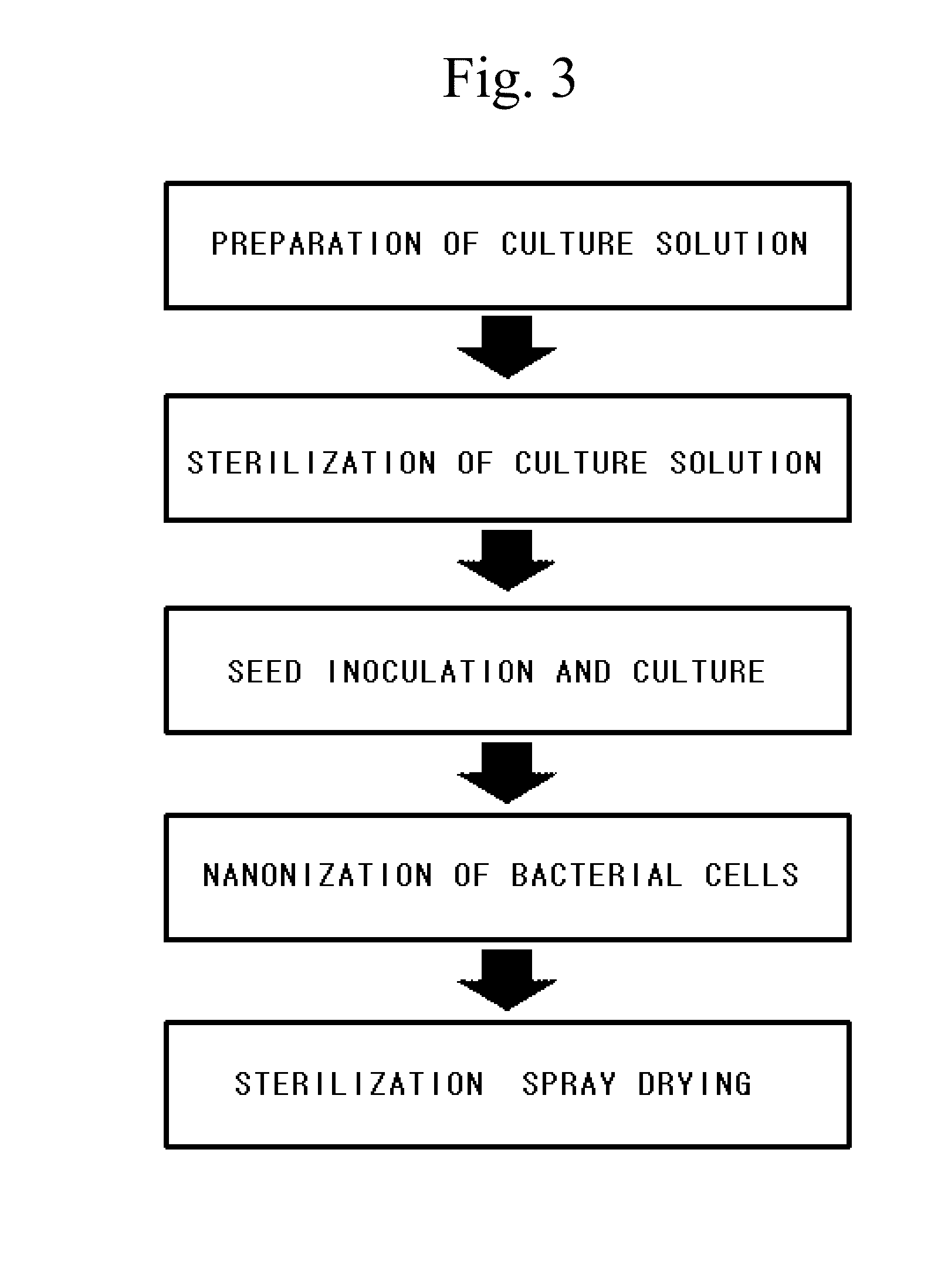Nano-sized kimchi lactic acid bacteria
a technology of lactic acid bacteria and kimchi, which is applied in the direction of bacteria material medical ingredients, bacteria based processes, drug compositions, etc., can solve the problems of limited daily intake, achieve excellent prevention and treatment effect, improve intestinal environment, and facilitate intestinal absorption
- Summary
- Abstract
- Description
- Claims
- Application Information
AI Technical Summary
Benefits of technology
Problems solved by technology
Method used
Image
Examples
example 1
Identification of New Kimchi Lactic Acid Bacteria
[0069]To develop new kimchi lactic acid bacteria, the inventors diluted a kimchi extract, and cultured the extract in an MRS agar medium (Oxoid, Hampshire, the UK) at 30° C. under an aerobic condition for 48 hours. After the culture, glossy ivory colonies which are typical types of lactic acid bacteria, were selected and screened, and the selected colonies were isolated by a method of transferring the colonies to and culturing them in a fresh medium for three cycles. Among pure-cultured lactic acid bacteria, a strain (SIID11558) having the most excellent effect of improving an intestinal environment was finally selected and identified.
[0070]As shown in FIG. 1, it was confirmed that the SIID11558 strain was a gram-positive bacillus forming ivory colonies and, morphologically, having a size of 0.8 to 0.9×1.2 to 1.5 μm.
Sequencing and analysis of 16S rRNA of the isolated strain were performed by Techno Suruga Laboratory Co. Ltd., and acc...
example 2
Preparation of Nano-Sized Kimchi Lactic Acid Bacteria nF1 Powder
[0079]The nF1 strain isolated and identified in Example 1 was cultured in a 20 wt % sodium hydroxide aqueous solution in a known nutrient medium to which 5 wt % glucose was added, and incubated at a neutral pH and a temperature of 36.5° C. and ended at the time at which glucose started being consumed. In the preparation of nano-sized kimchi lactic acid bacteria powder of the present invention, a pH range may be a neutral region of pH 5 to 7, and most preferably pH 6.5.
[0080]After the culture, a culture solution was heated and sterilized at 80° C. for 10 minutes, the cells were washed with PBS, and dextrin was added as an excipient nine times a weight of the cells and then dispersed with a mixer. Afterward, the resulting mixture was freeze-dried through spraying to prepare a powder sample, and it was confirmed that 1012 or more kimchi lactic acid bacteria nF1 strains of the present invention per 1 g were included. A proc...
example 3
Test for Confirming Effect of Improving Intestinal Environment Using Colitis Mouse Model
3-1) Test Animal and Test Material
[0083]As test animals, 6-week-old Balb / c male mice were used, and 2% dextran sulfate sodium (DSS) was administered into all groups to induce colitis, except a normal group (Normal). Specifically, mouse models were classified into the normal group (normal) in which colitis was not induced and test groups in which colitis was induced by the DSS solution, and the test groups were classified into a control group (control) into which a test material was not administered, a high concentration nF1 administered group (nF1-H), a medium concentration nF1 administered group (nF1-M), a low concentration nF1 administered group (nF1-L), a normalized kimchi administered group (N-Kimchi), and an nF1 powder-added kimchi administered group (nF1-Kimchi). As the test animals, 11 mice per each group were used, and raised at a temperature of 20±2° C., a humidity of 40 to 60% and a lig...
PUM
| Property | Measurement | Unit |
|---|---|---|
| particle size distribution | aaaaa | aaaaa |
| particle size distribution | aaaaa | aaaaa |
| pressure | aaaaa | aaaaa |
Abstract
Description
Claims
Application Information
 Login to View More
Login to View More - R&D
- Intellectual Property
- Life Sciences
- Materials
- Tech Scout
- Unparalleled Data Quality
- Higher Quality Content
- 60% Fewer Hallucinations
Browse by: Latest US Patents, China's latest patents, Technical Efficacy Thesaurus, Application Domain, Technology Topic, Popular Technical Reports.
© 2025 PatSnap. All rights reserved.Legal|Privacy policy|Modern Slavery Act Transparency Statement|Sitemap|About US| Contact US: help@patsnap.com



